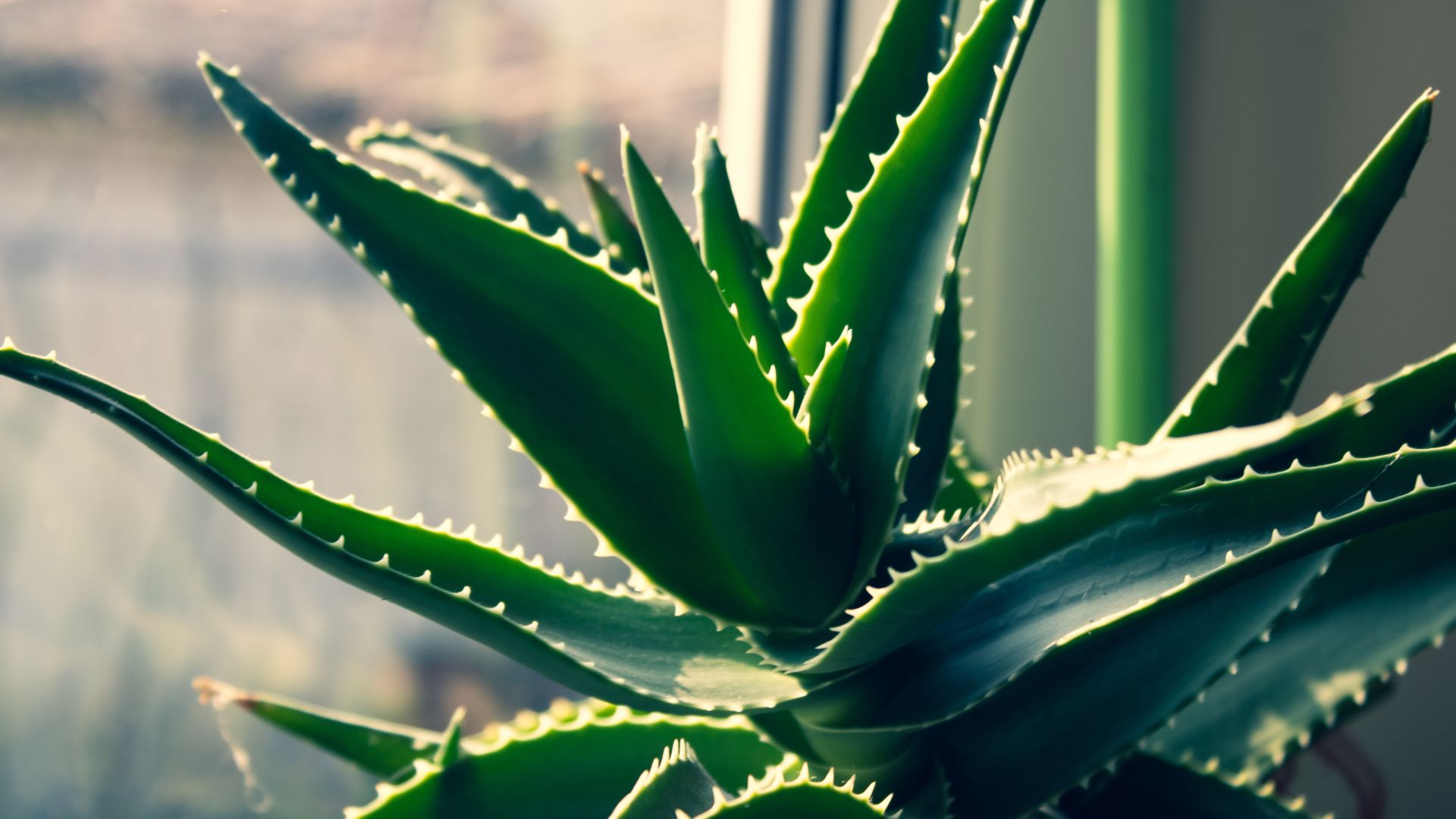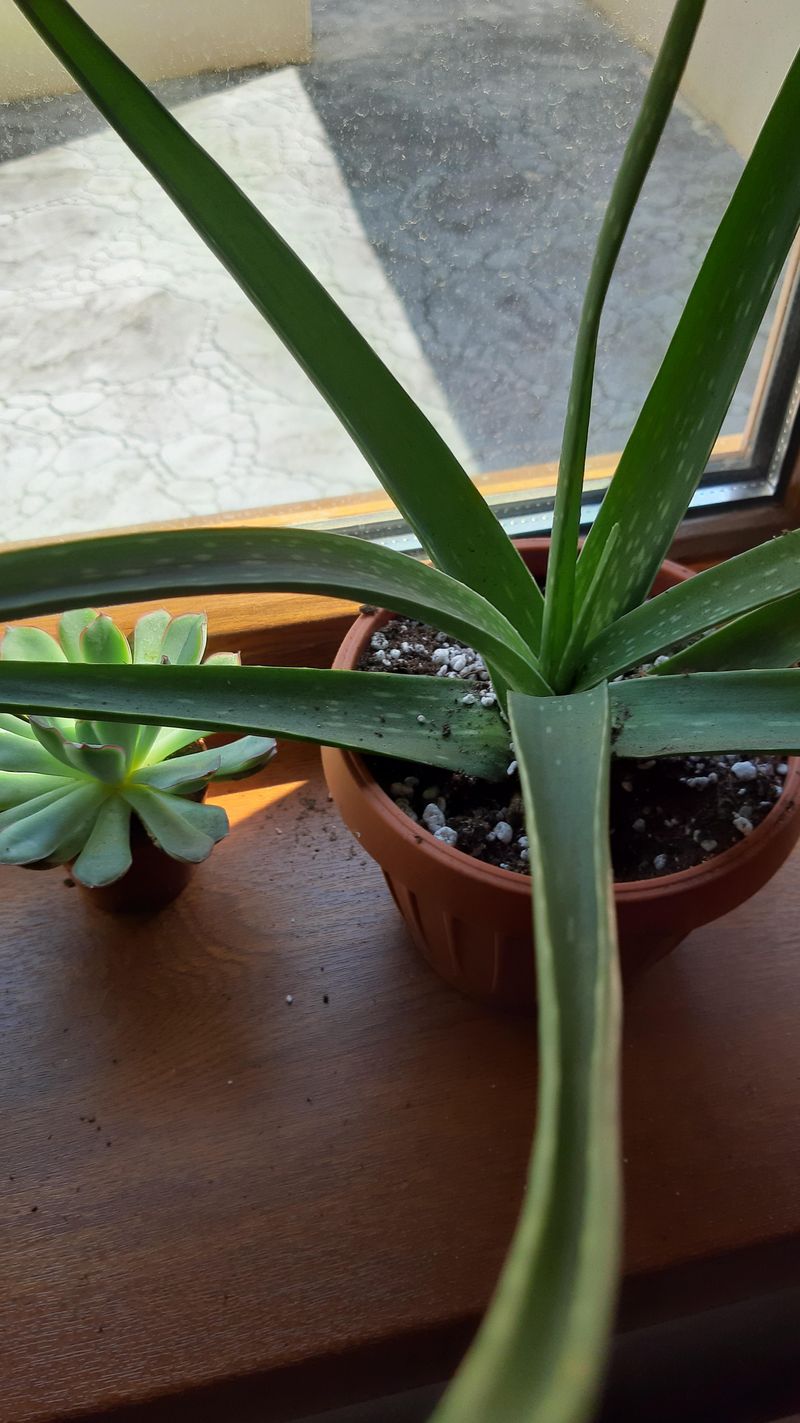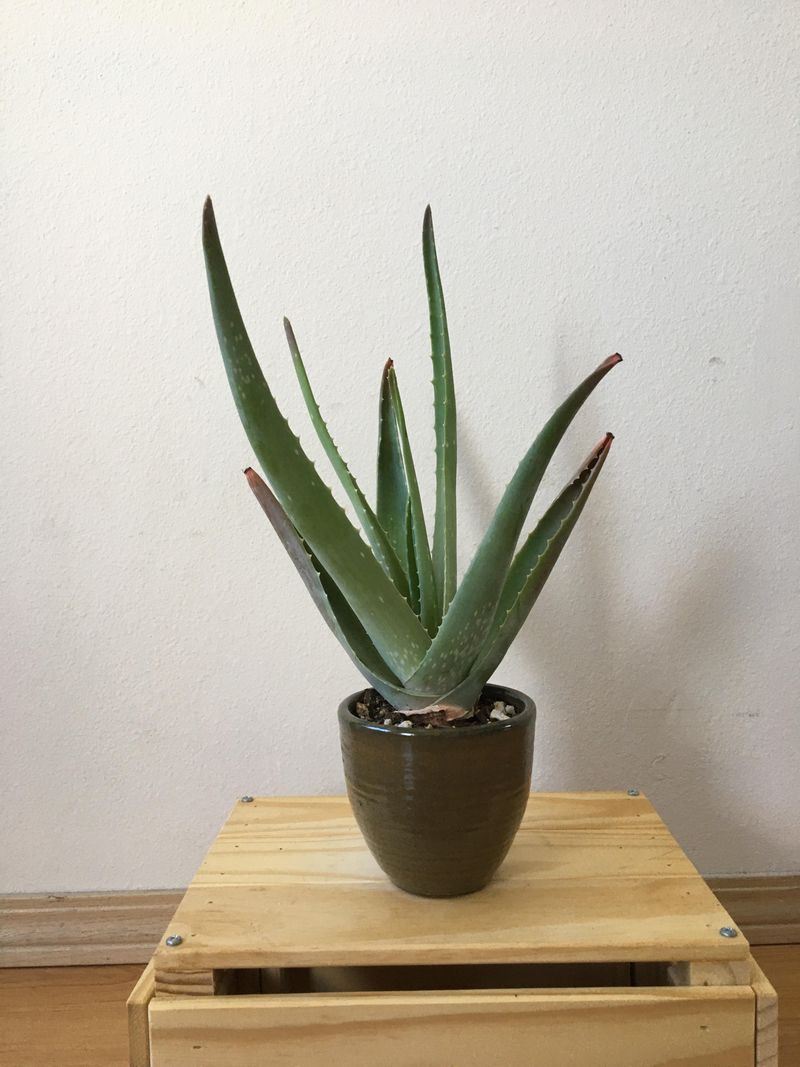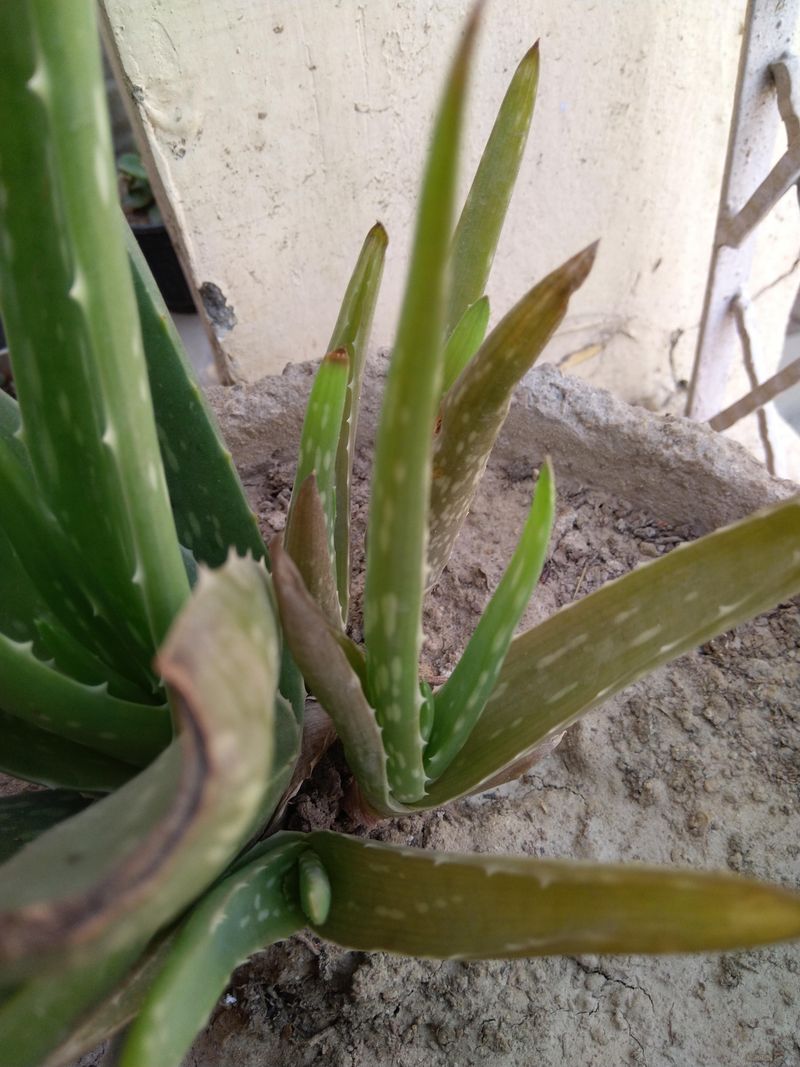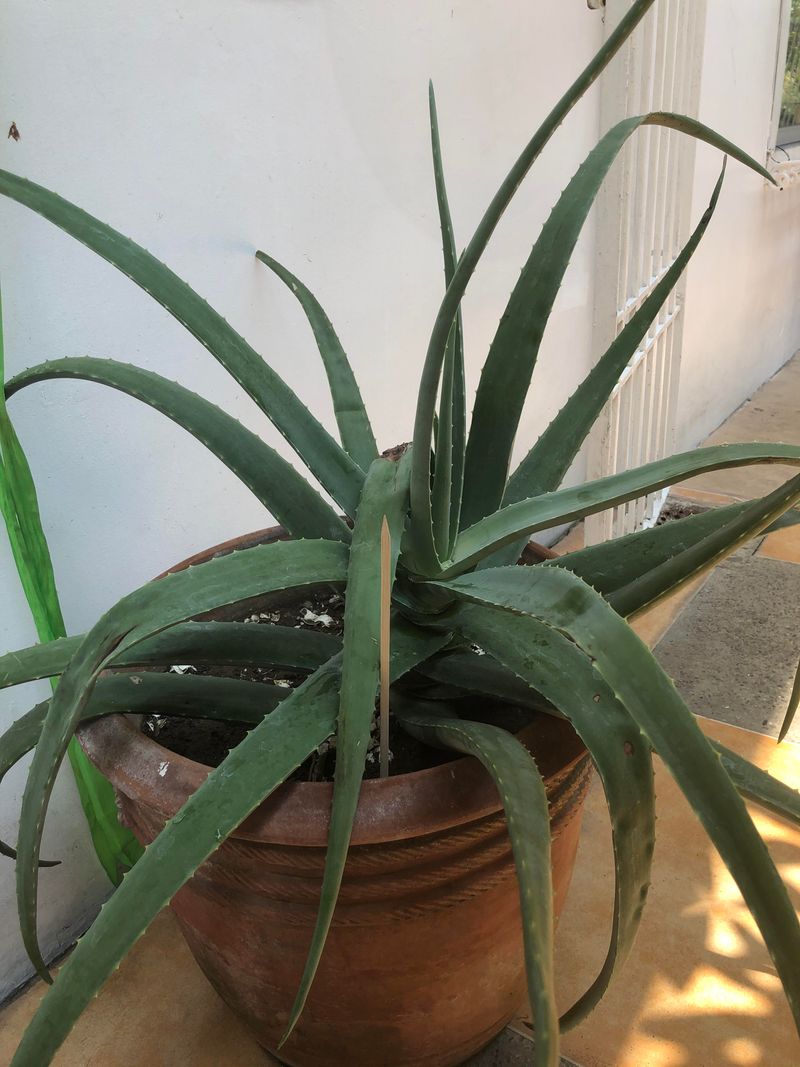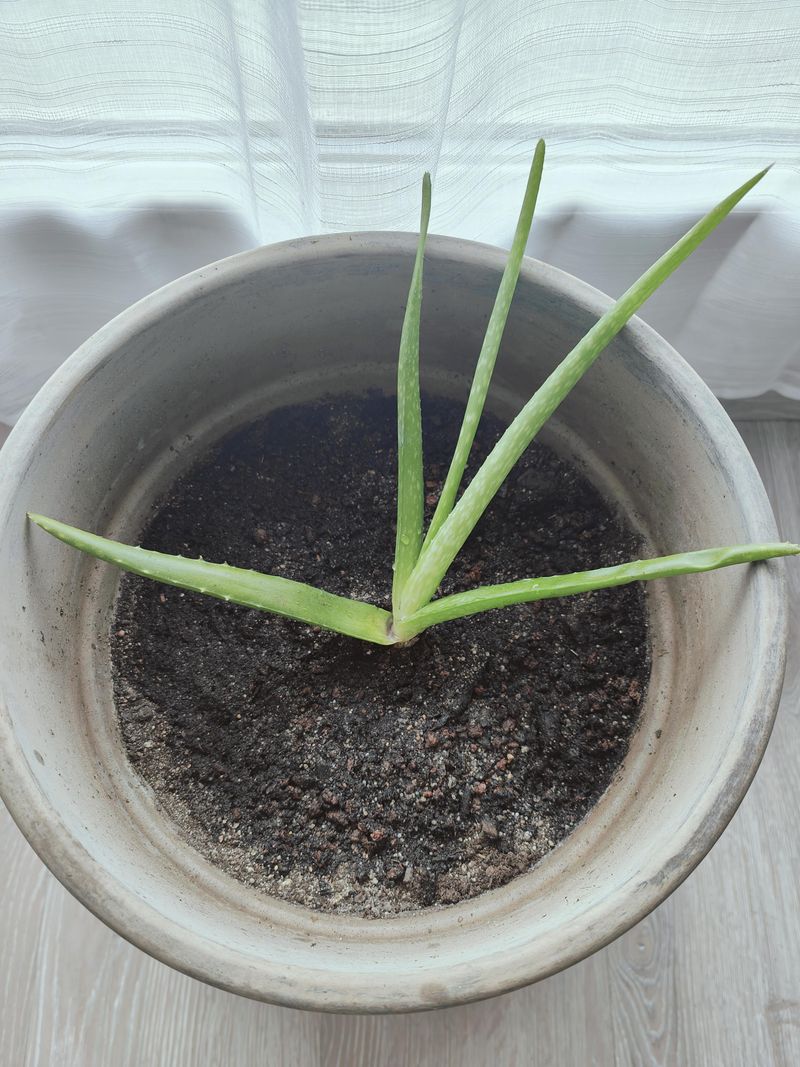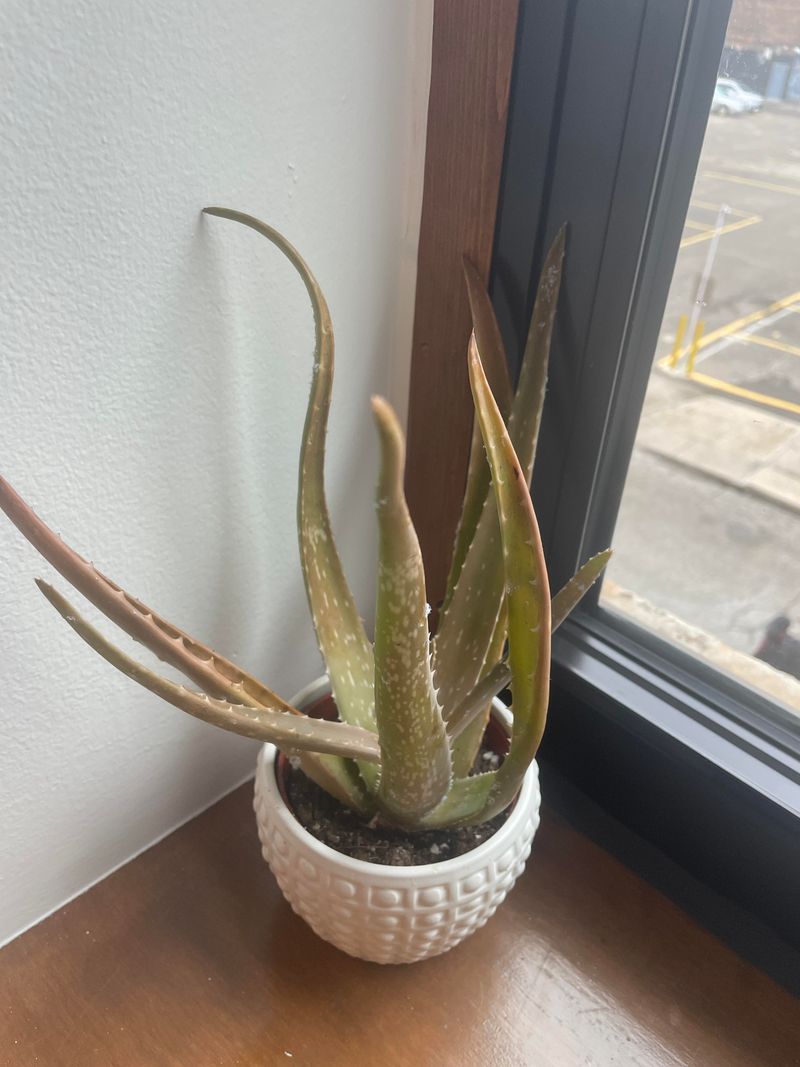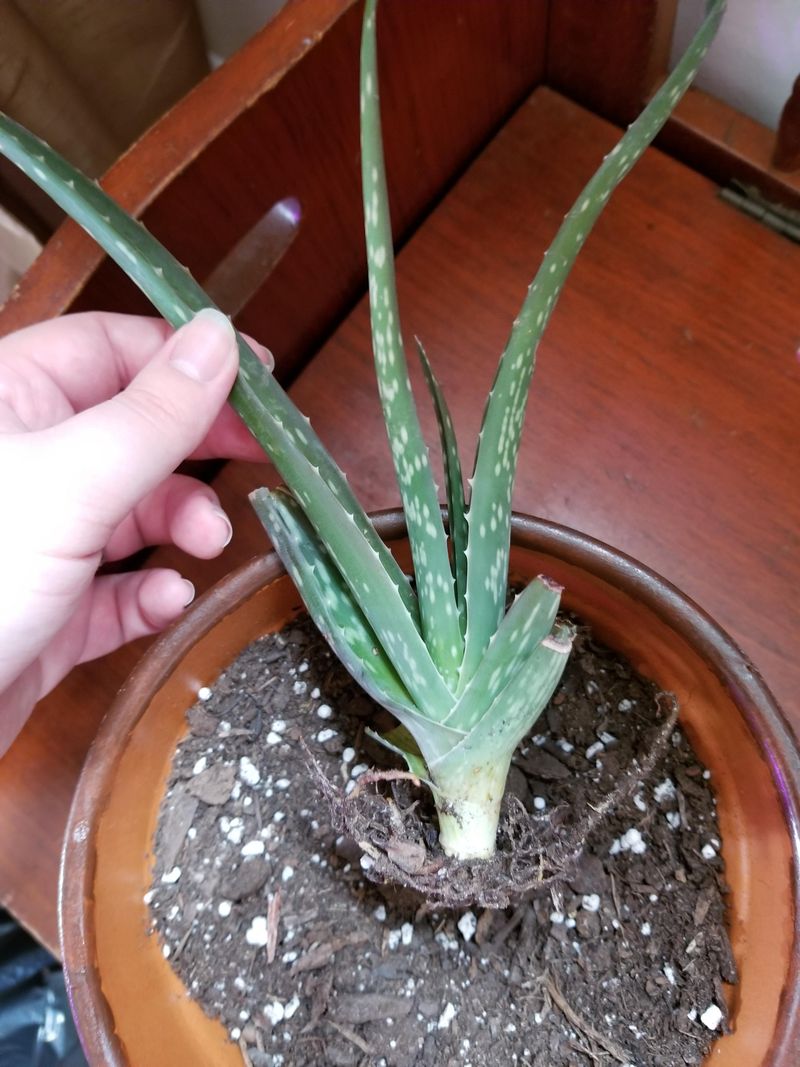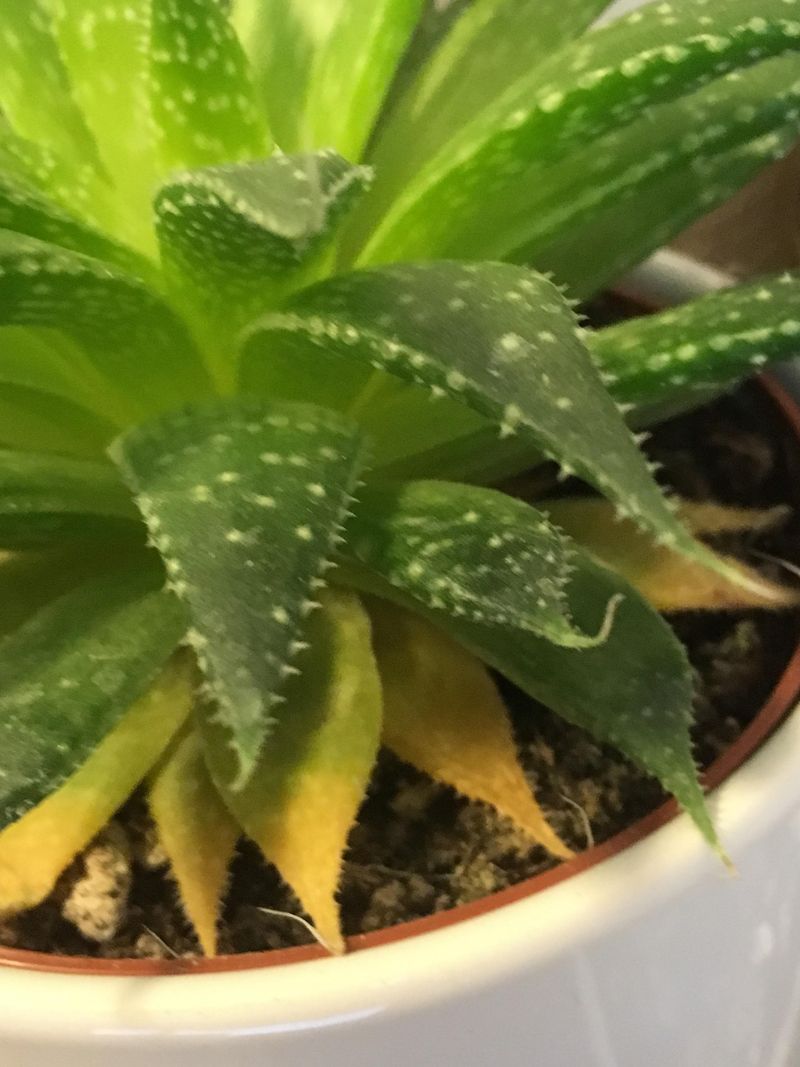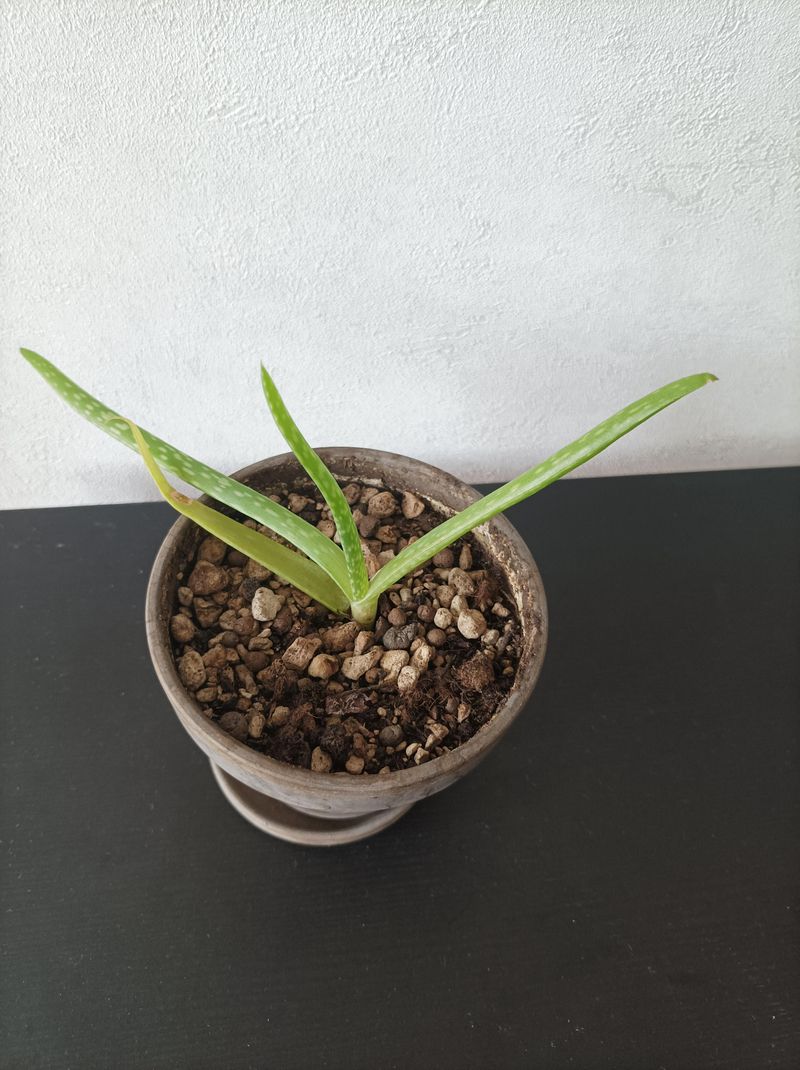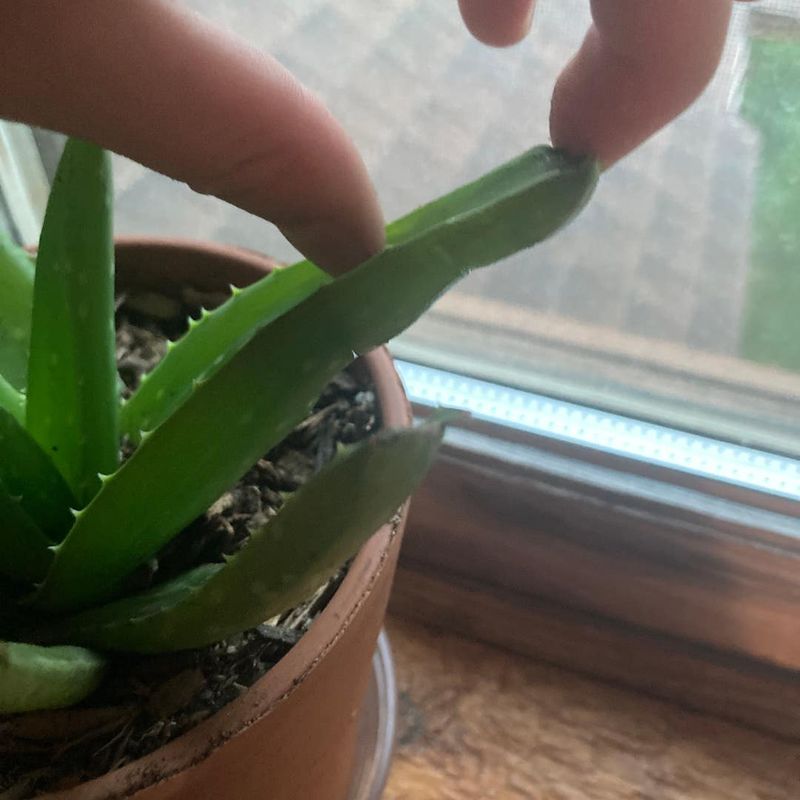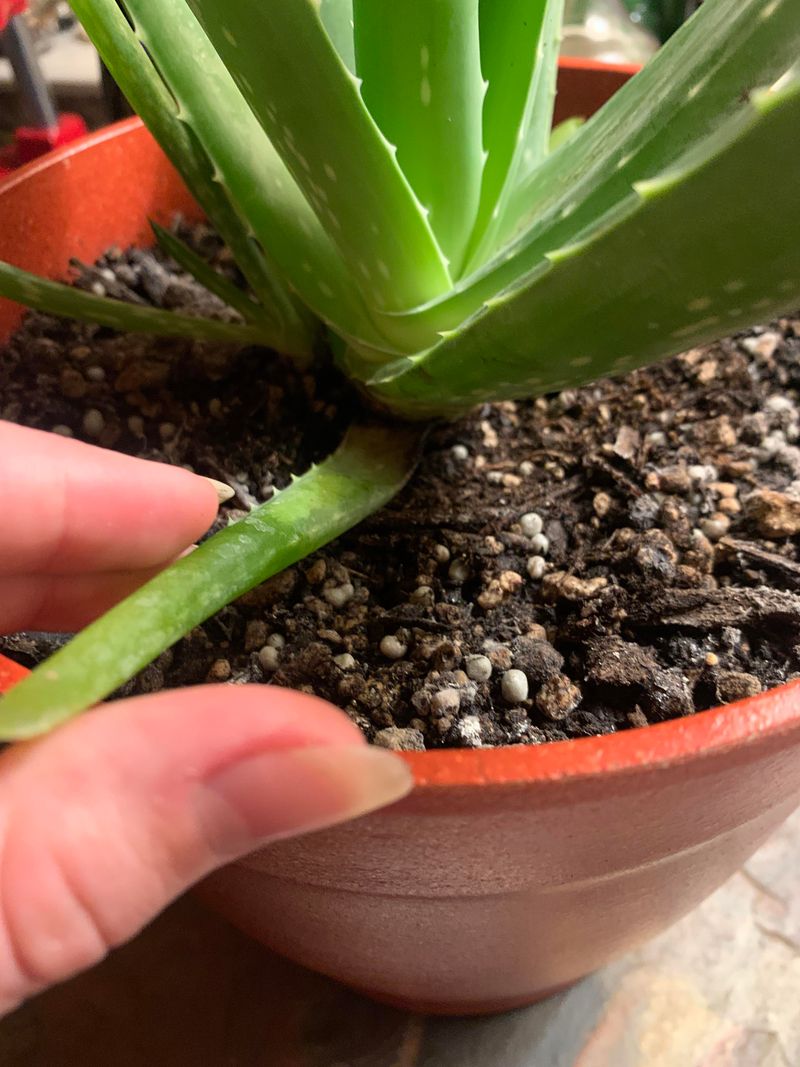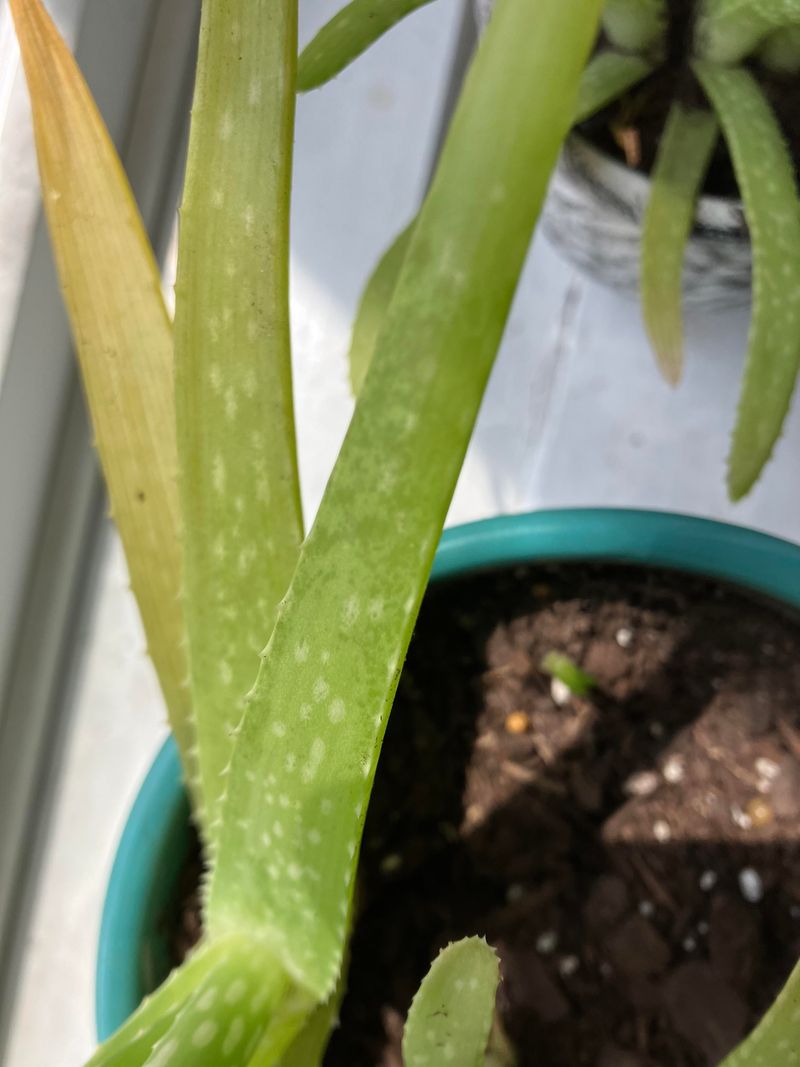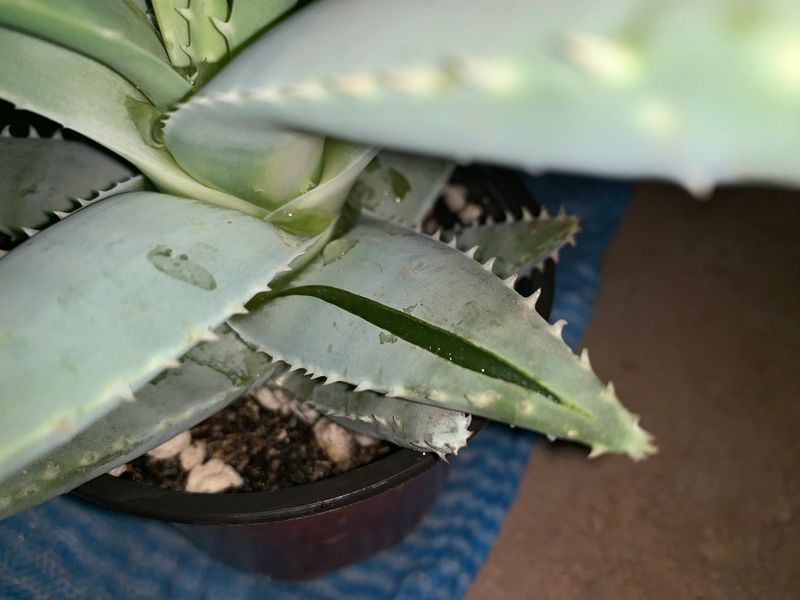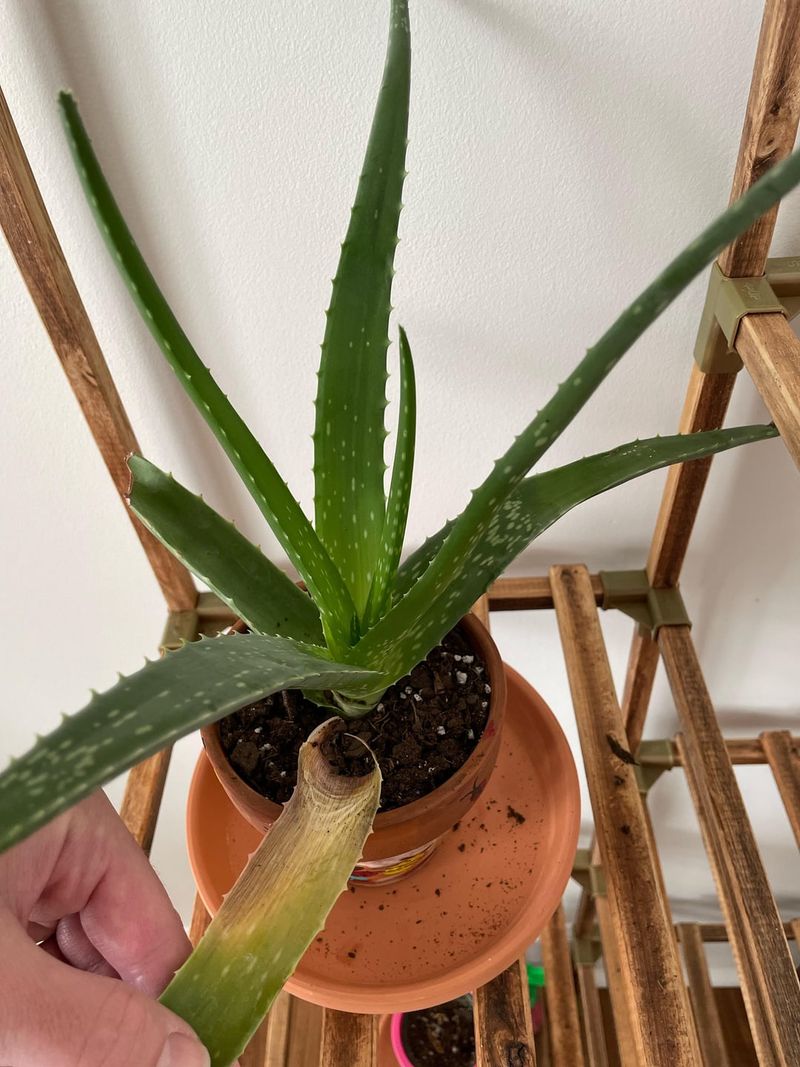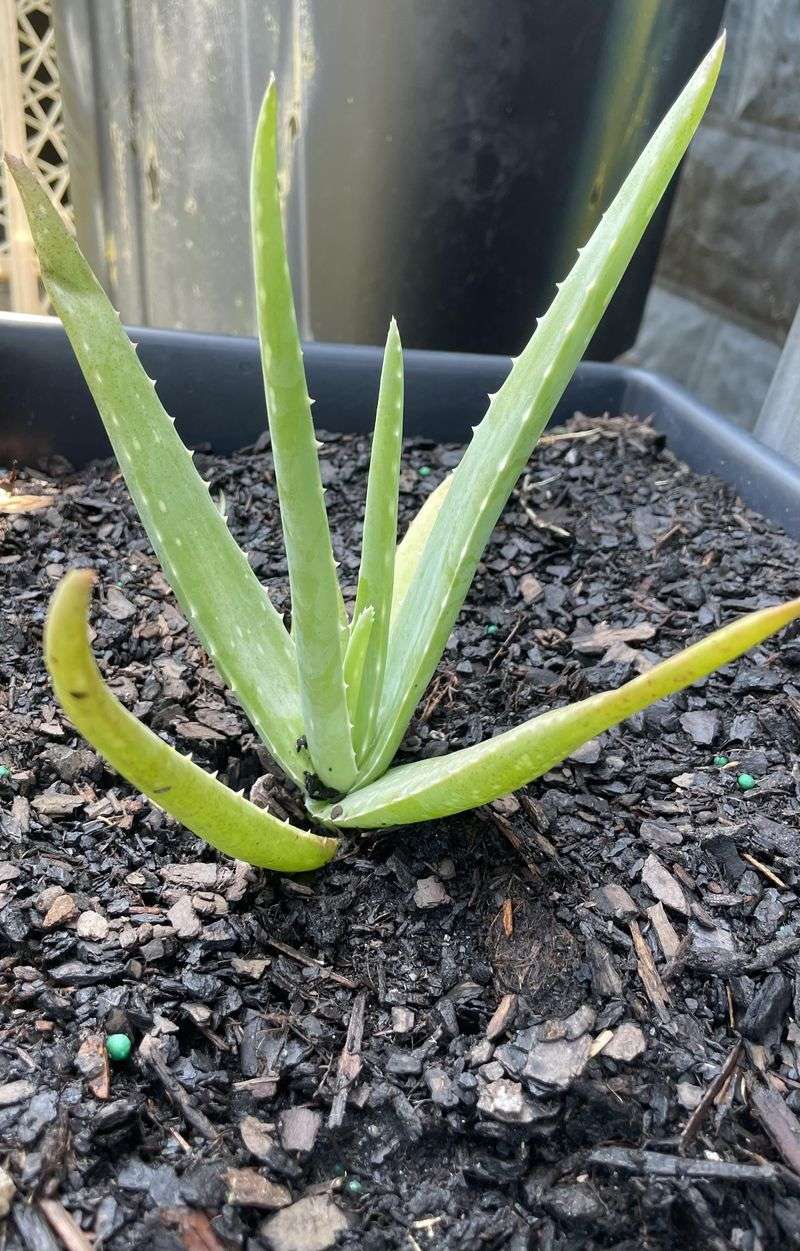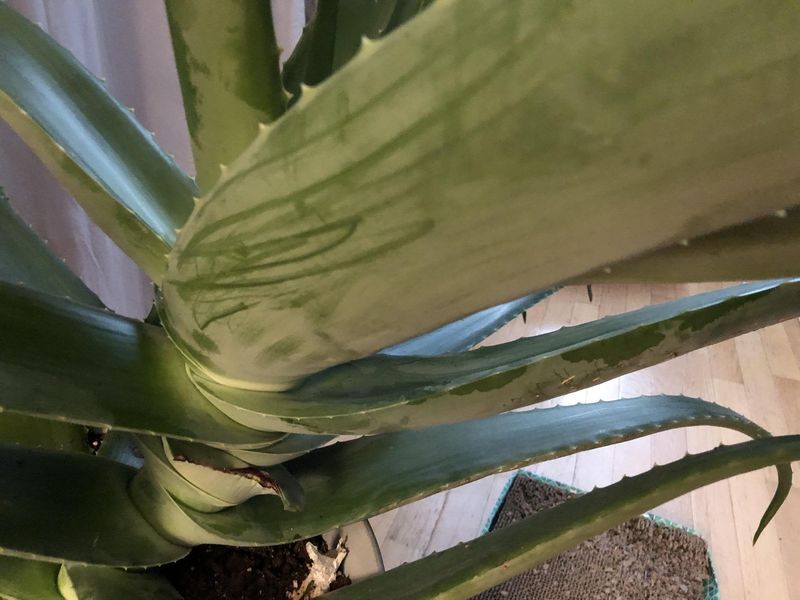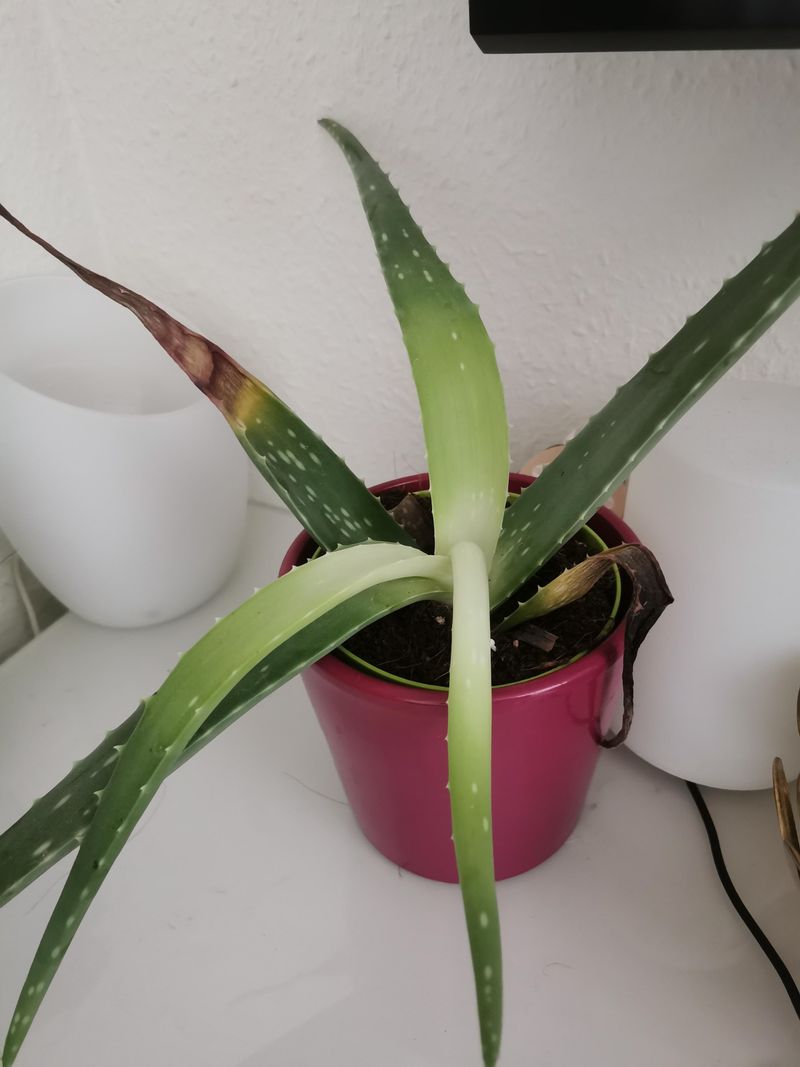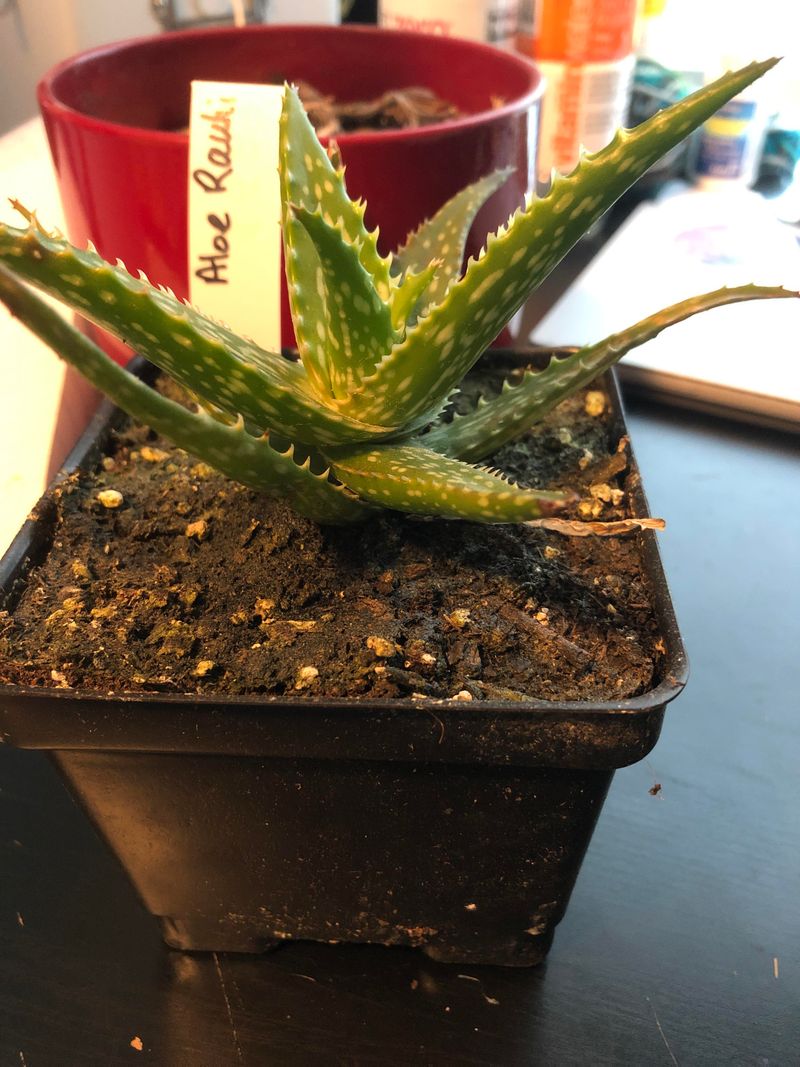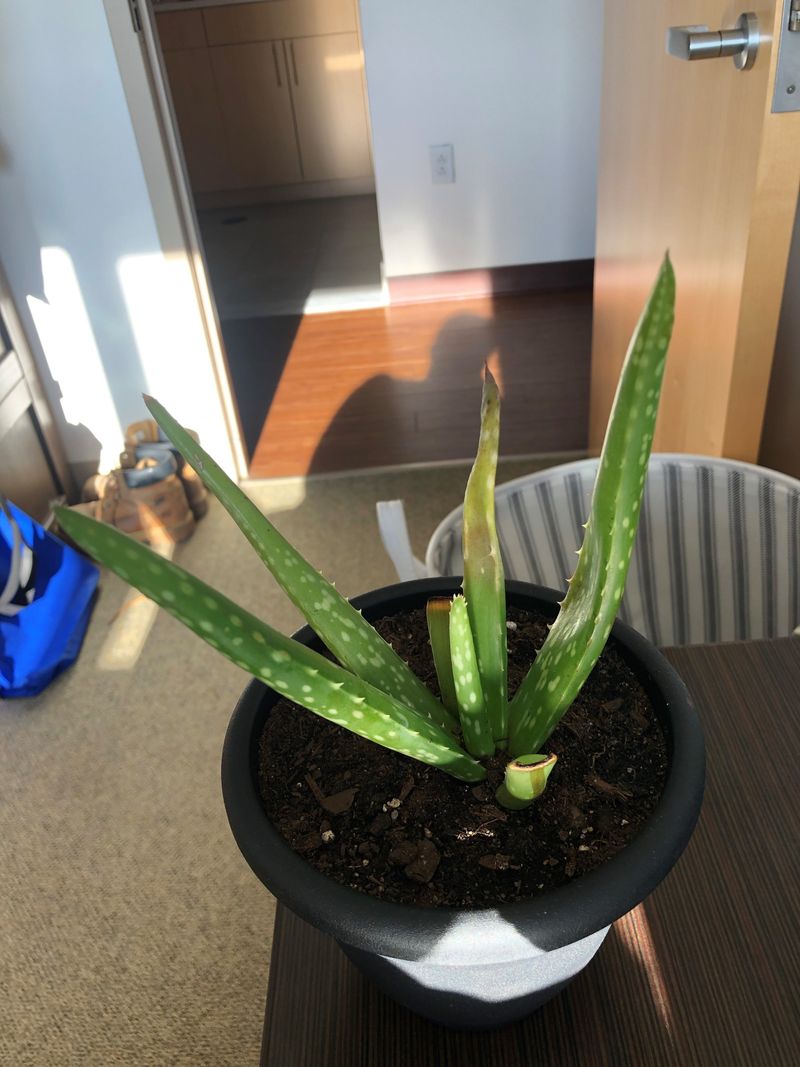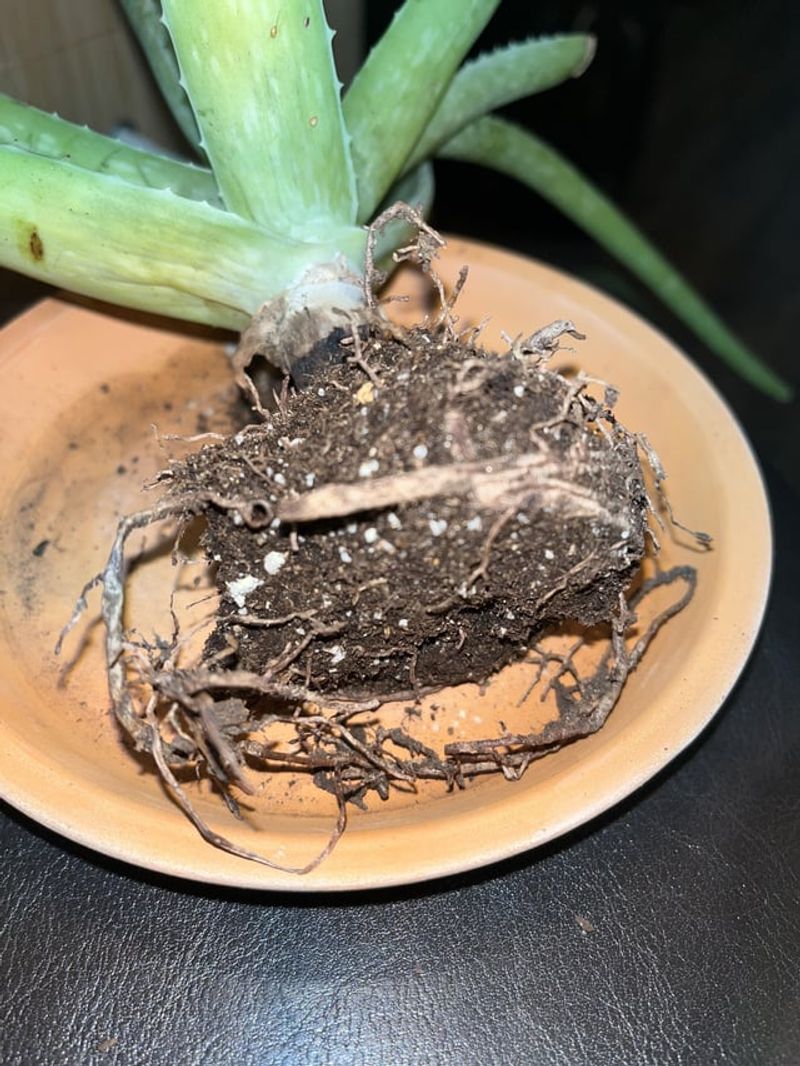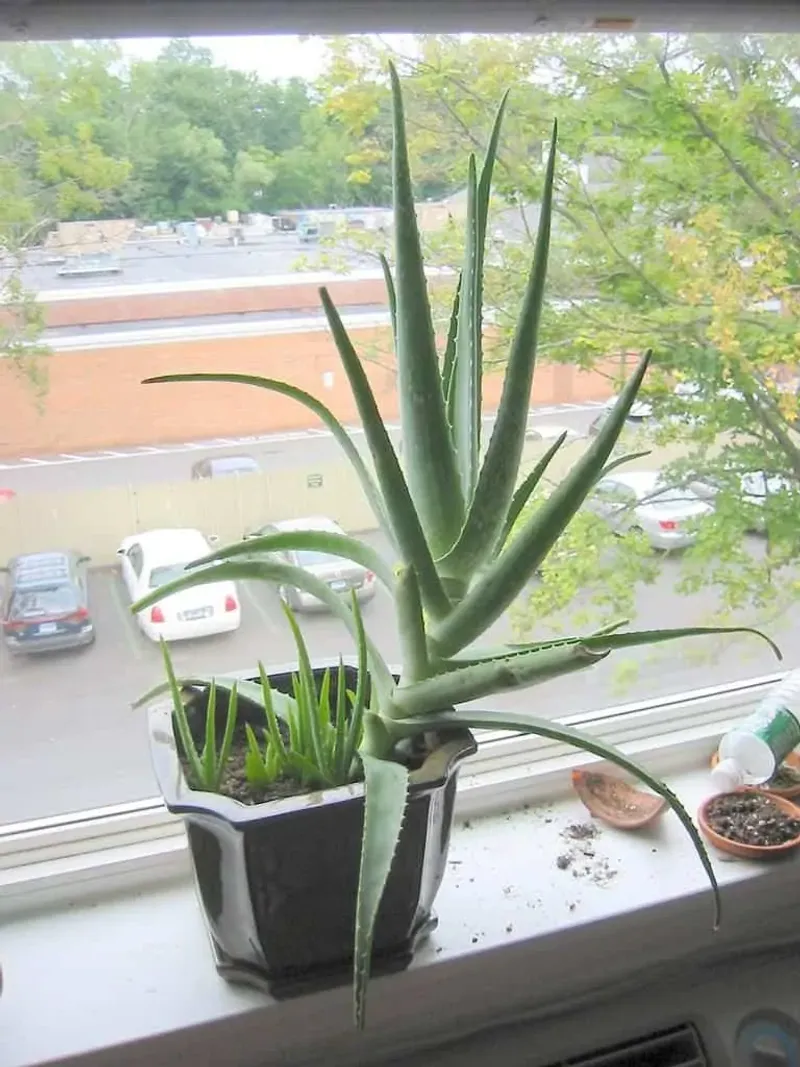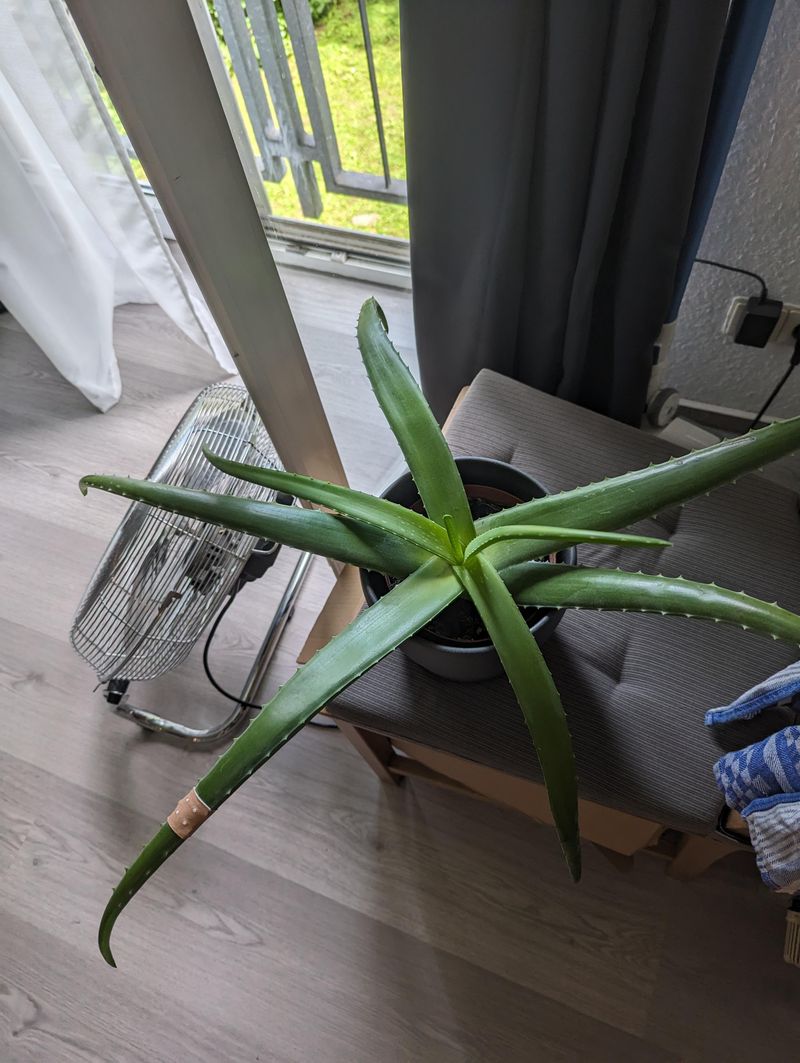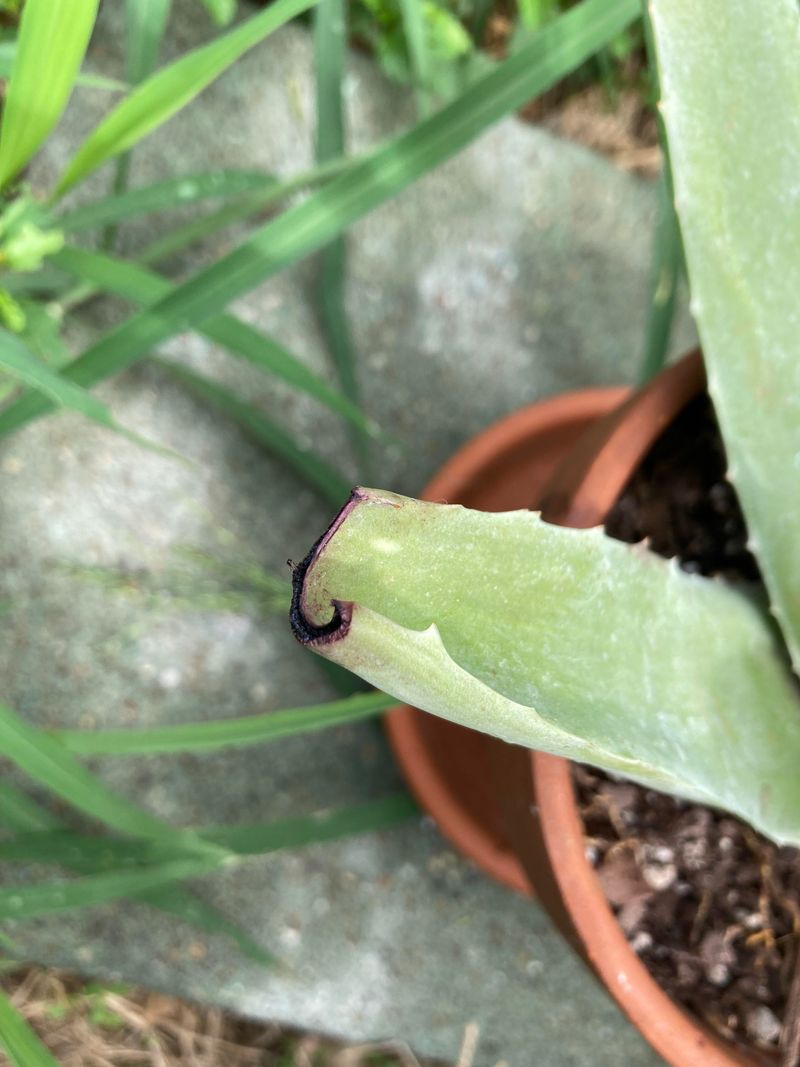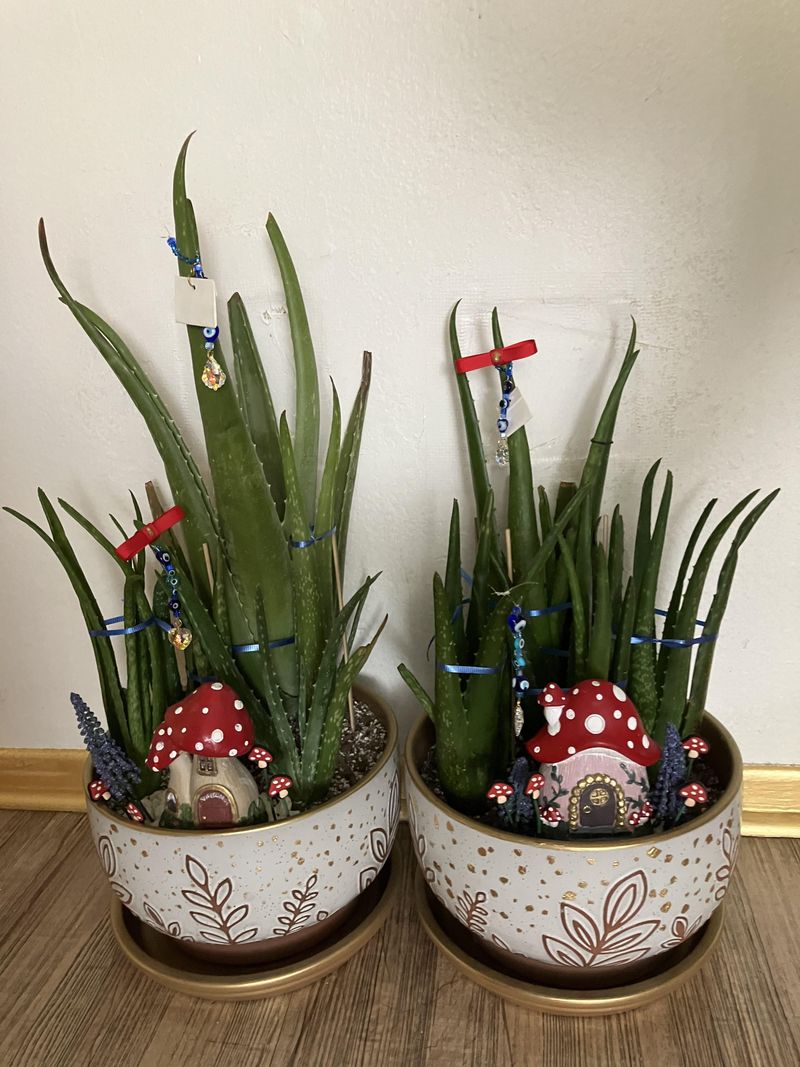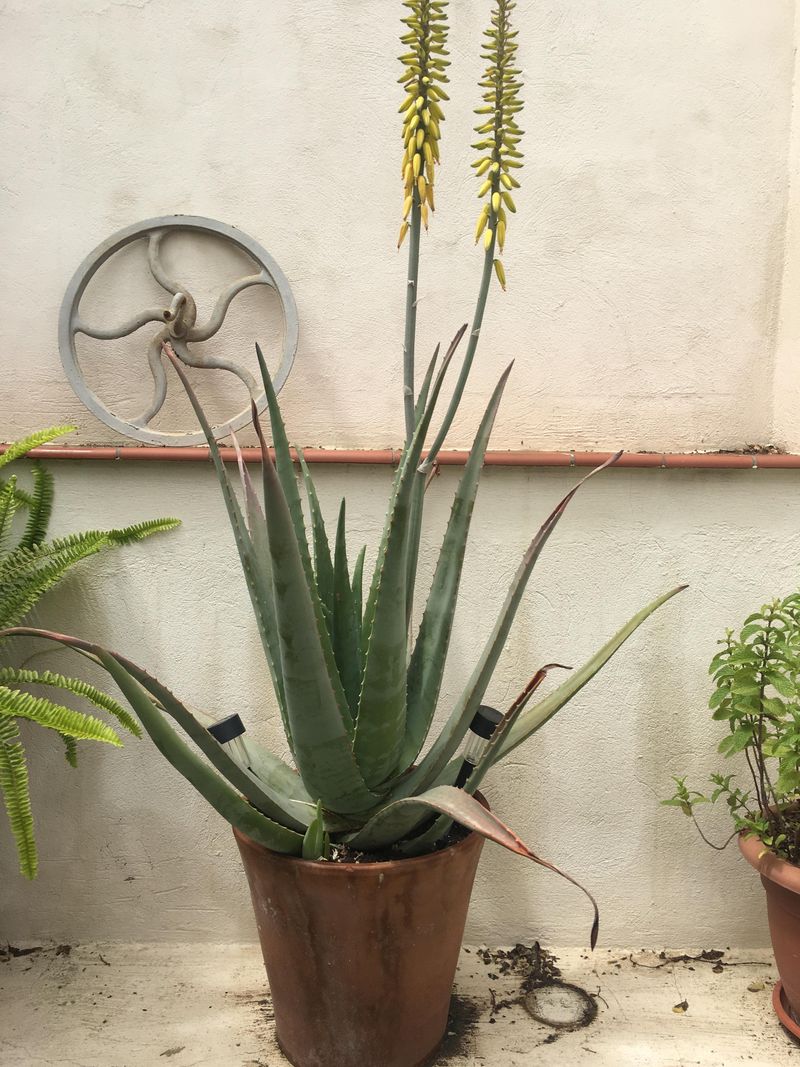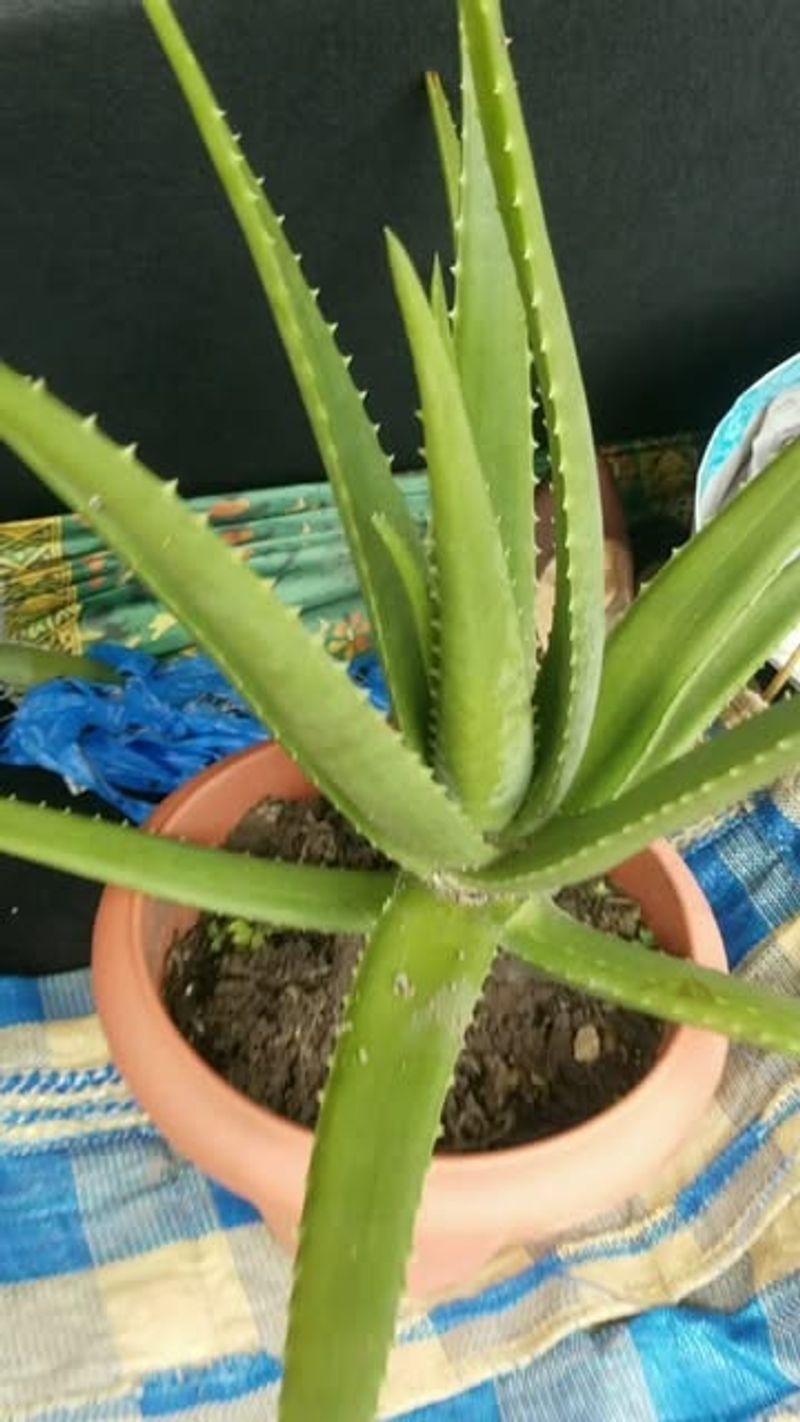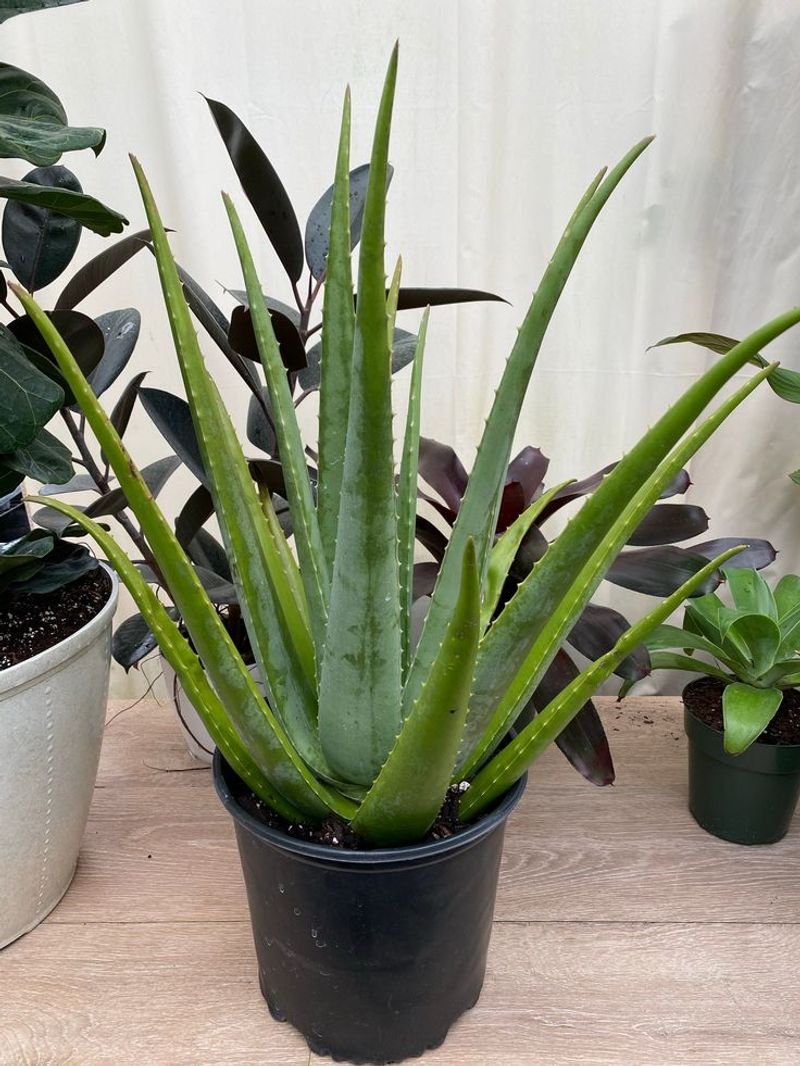Even the toughest aloe plant has its limits when it comes to water. If you’ve ever wondered whether your plant is silently begging for a drink or just being dramatic, you’re not alone!
Understanding these signs means your plant won’t go from thriving to barely surviving. Here are thirty indicators that your aloe might be whispering (or screaming!) for a little more H2O. Each sign tells a story. Watch out for the signs and you’ll soon have an aloe that’s hydrated and happy, without the drama!
And trust me, once you get the hang of it, your aloe will reward you with strong leaves that practically glow with gratitude.
1. Wrinkled And Shriveled Leaves
How’s your aloe’s skin looking today? If it’s more prune than plant, it’s time for a moisture boost. Wrinkled and shriveled leaves are the plant world’s SOS signal for hydration.
When your aloe’s leaves start looking like you’ve left them in the dryer too long, it’s begging for a drink. Maybe you’ve noticed this subtle distress signal lately and wondered what to do. Have no fear, as recognizing this classic sign gets you halfway to solving the issue.
Just give your green friend a gulp, and you’ll soon see those leaves plump back to life!
2. Leaves Curling Inward
Ever feel like curling up when you’re thirsty? Your aloe does, too! Leaves curling inward might look artistic, but it’s a plea for water.
This sneaky sign can easily be mistaken for a unique style choice, but don’t be fooled. It’s your aloe’s way of trying to conserve moisture. You might think, “Is it a new trend in plant fashion?”
Nope, just a survival tactic. Next time you see those curling edges, give your aloe a generous sip. It’ll uncurl and thank you with a healthy glow. Who knew plants could be so expressive?
3. Brittle Or Crispy Leaf Texture
Oh, the times I’ve walked past my aloe, only to hear a subtle “crunch” as if stepping on a dry leaf. That brittle, crispy texture is your plant’s not-so-gentle reminder it’s running on empty.
When aloe leaves resemble potato chips more than fleshy paddles, it’s a clear sign of water deprivation. I’ve been guilty of letting hydration slip, only to meet an aloe that crackles at my touch.
So, if your aloe is singing the crispy blues, it’s time to turn on the tap! A little TLC goes a long way in restoring that tender touch.
4. Brown Or Dry Leaf Tips
Ever notice those brown, dry tips appearing on your aloe leaves? They might be adding a rustic charm, but they’re crying out for hydration. This is one of those moments when your plant’s aesthetic appeal takes a backseat to survival.
It’s the aloe’s way of saying, “Help, I’m parched!” So when those tips turn toasty, it’s time to reach for the watering can. By attending to these early signs, you help your aloe avoid a full-blown drought drama.
A gentle, slow pour of water could make all the difference in keeping those tips green.
5. Thinner Leaves Than Usual
Notice your aloe’s leaves looking slimmer than usual? It’s not on a diet. It’s just thirsty! Thinner leaves signal that your plant’s water reserves are depleting. It’s like the plant version of a shrinking waistline, but here, it means trouble.
If your aloe seems to be slimming down, it’s time to beef up its water intake. By recognizing this subtle change, you help your plant reclaim its plump, healthy state.
Give it some water love, and watch those leaves go from slim to robust faster than you can say “photosynthesis.”
6. Slow Or Stunted Growth
Ever had one of those weeks where nothing seems to grow? Your aloe feels that way too when it’s thirsty. Slow or stunted growth is its way of saying, “Hydrate me!” It might make you ponder, “Did I forget something?”
If your aloe’s progress seems to be in slow motion, it’s time to check its water supply. Lack of moisture can halt its development, leaving you with a plant that seems frozen in time.
Regular watering and a dash of patience will get your aloe back to growing like it’s in a race!
7. Leaves Losing Their Plumpness
Feeling like your aloe lost its bounce? Leaves losing their plumpness are a red flag for dehydration. It’s like witnessing a balloon slowly deflate over time. You might glance at your plant and think, “Weren’t you puffier yesterday?”
Well, it’s not your imagination. When those leaves start slimming down, it’s a direct call for water. Don’t let it linger in its saggy state for too long. A good drink will have it perked up faster than you can say “chlorophyll.”
Hydration is the key to reviving that plump charm!
8. Drooping Or Wilting Leaves
Ah, the sight of drooping or wilting leaves is like a plant’s version of a dramatic sigh. My aloe once looked like it was auditioning for a weeping willow role, all because I forgot its watering day.
Those droopy leaves might have you wondering if they’ve lost the will to stand tall. It’s just a desperate plea for hydration. Give your aloe a good soak, and you’ll witness a transformation, as those leaves regain their upright, proud posture.
It’s amazing how a little water can revive its spirit and yours too!
9. Soil Pulling Away From The Pot Edges
Ever spotted your aloe’s soil pulling a disappearing act? It’s not escaping. It’s just bone dry. When soil pulls away from the pot edges, it’s a glaring sign that your plant is parched.
It’s like the soil’s way of saying, “I’m shrinking without water!” You might glance over and think, “Am I seeing things?” Nope, it’s a cry for help.
A thorough watering will bring that soil back where it belongs, hugging the roots and keeping your aloe hydrated. Remember, a well-watered aloe is a happy aloe!
10. Soil Feels Completely Dry For Weeks
When was the last time your aloe had a drink? If the soil feels dry for weeks, it’s high time for a hydration intervention. This arid condition is your aloe’s SOS for water.
You might think, “Is it really that dry?” Yes, your finger isn’t lying! When the soil’s texture resembles a desert, it’s time for action.
Giving your plant a generous soak will transform that barren terrain into a thriving oasis. Regular checks and watering can prevent this drought dilemma from becoming a desert disaster.
11. Yellowing Leaves
Have you noticed your aloe’s leaves turning yellow? It’s not trying a new fashion trend. It’s telling you it’s under water stress. Yellowing is an early warning that your plant is not getting the hydration it needs.
You might question, “Is it too late?” Fear not, as it’s not irreversible. Prompt attention with a regular watering schedule can reverse this yellow alert.
By acting quickly, you help your aloe maintain its green charm and avoid further stress. A little water goes a long way in keeping it radiant and healthy.
12. Lack Of New Growth
Ever feel like your aloe’s stuck in time? A lack of new growth is often due to insufficient water. When your plant seems to hit a growth plateau, it’s signaling a need for hydration.
You might wonder, “Is it taking a break?” No, it’s just thirsty! Regular watering can kickstart that growth process and bring fresh, new leaves into view. Remember, a well-watered aloe is a growing aloe.
By keeping its thirst quenched, you’ll soon see it sprouting with energy, as if saying “Thank you!” for the moisture boost.
13. Aloe Leaves Feeling Hollow
Ever touched an aloe leaf and thought, “Why does it feel like a straw?” That hollow sensation indicates severe water deficiency.
I once realized my aloe felt more like a tube than a fleshy leaf, and it was crying out for hydration. It’s as if the plant has emptied its reserves and is begging for a refill. If you encounter this hollow feeling,
it’s time to act. A good drink will help those leaves regain their fullness. Your aloe will thank you by plumping up and thriving once more!
14. Roots Appearing Dry And Brittle
Have you ever checked your aloe’s roots, only to find them dry and brittle? It’s not a fashion choice. It’s a sign of moisture scarcity. This condition reveals that your plant is struggling to absorb the necessary hydration.
You might wonder, “How did it get so dry?” It’s a wake-up call for more consistent watering. Gently watering the roots can restore their vitality, supporting the entire plant.
Remember, healthy roots make for a thriving aloe. A little attention to the root zone can work wonders in refreshing its overall health!
15. Leaves Becoming Transparent
Ever seen your aloe’s leaves looking like stained glass? Transparency in leaves is a sign they’re drying out. This can be an alarming sight, as it hints at severe dehydration.
You might ask yourself, “Is it too late?” Fortunately, with timely intervention, you can save your plant. By providing adequate water, you help those leaves regain their solid, healthy appearance.
Regular hydration will prevent this crystal-clear crisis and keep your aloe thriving. Remember, a little water today prevents transparency tomorrow!
16. Cracks Forming On Leaf Surfaces
Ever noticed cracks on your aloe’s leaf surfaces? It’s not a new form of plant art. It’s a cry for water. Cracks indicate severe dehydration, where the plant’s structure is literally breaking down.
You might think, “Did I miss something important?” That’s your cue to provide a refreshing soak. With some attention and regular watering, you can mend those cracks and restore your aloe’s robust appearance.
It’s amazing how a little hydration can heal and rejuvenate, bringing your plant back from the brink!
17. Leaves Falling Off Easily
Ever brushed against your aloe and found leaves dropping like confetti? That’s a not-so-subtle hint that it’s desperate for water. Leaves falling off easily are a clear sign of distress.
I once experienced my aloe shedding leaves at the slightest touch, all because I ignored its watering schedule. A generous drink can help those leaves cling on firmly, ensuring they’re not lost too soon.
With some consistent care, you’ll have an aloe that’s sturdy and resilient, instead of shedding like it’s fall all year round!
18. Base Of The Plant Shrinking
Have you noticed your aloe’s base shrinking like it’s on a weight-loss plan? It’s not a new exercise regime. It’s a call for hydration. When the core of your plant loses moisture, it’s a sure sign of water shortage.
You might wonder, “Is this normal?” Nope, it’s your aloe’s way of begging for a drink. Provide ample water to plump up the base, and you’ll soon see it regain its sturdy form.
A hydrated base supports a healthy plant, so ensure it gets the moisture it needs to thrive!
19. Dusty Or Ashy Look On Leaves
Ever glanced at your aloe and thought it resembled a scene from a dust storm? That dusty or ashy look is a sign of prolonged lack of moisture. It’s like your aloe is wearing a coat of despair.
You might ponder, “When did it get so dusty?” It’s time for a hydration intervention. A gentle misting or thorough watering can wash away the dust, revealing leaves beneath.
Regular attention keeps your aloe clean and happy, avoiding that ashy aesthetic that signals distress. Remember, water works wonders!
20. Aloe Turning Light Green Or Gray
Noticed your aloe turning a peculiar shade of light green or gray? It’s not trying to blend in with the decor. It’s suffering from dryness. This color change indicates it’s losing vitality due to a lack of water.
You might wonder, “Is it fading away?” Act quickly to quench its thirst, and you’ll see those colors return to their healthy hues. Regular watering ensures your aloe stays colorful and lively, not blending into the background.
A well-hydrated aloe is a true companion, ready to brighten your space!
21. Soak The Soil Gently
When my aloe seems thirsty, I opt for a gentle soil soak. It’s a great way to reintroduce moisture without overwhelming the plant.
Carefully pouring water until the soil is evenly damp helps prevent the shock of too much too fast. This method allows the roots to absorb at their own pace. I once found my aloe looking rather sad, and a gentle soak brought it back to life.
It’s a simple technique that ensures your plant receives the hydration it craves, avoiding the drama of overwatering.
22. Use Room-Temperature Water
Using room-temperature water is a must when reviving an aloe. Cold or hot water can shock the roots, making recovery even harder. Imagine taking a freezing shower when you’re already feeling down.
Not fun, right? By using water that’s just right, you help your aloe absorb moisture smoothly. It’s like offering a comfortable blanket instead of an icy splash. This gentle approach eases the stress on your plant, encouraging healthy recovery.
Consistent, comfortable watering will have your aloe bouncing back in no time, happy and hydrated!
23. Check Drainage
Ever thought about checking your aloe’s drainage? It’s crucial to ensure water reaches the roots effectively. Poor drainage can lead to puddles or dry patches, neither of which are ideal.
If you’ve ever noticed water pooling on top or escaping too quickly, it’s time to assess the situation. Adjusting your pot or soil can make all the difference. Ensuring proper drainage helps your aloe thrive by providing consistent hydration without the pitfalls of overwatering.
It’s a small step with a big impact on overall plant health!
24. Mist The Leaves Lightly
Ever tried misting your aloe’s leaves? It’s a refreshing way to aid hydration without drowning the roots. Imagine a light sprinkle on a hot day—so soothing!
Light misting helps the leaves absorb moisture while keeping the roots safe. You might think, “Isn’t that overkill?” But it’s a gentle technique that offers extra hydration, especially in dry environments.
Regular misting, combined with proper watering, ensures your aloe stays pretty and lively, avoiding the perils of dehydration. It’s a simple, effective way to keep your plant thriving.
25. Move To A Shadier Spot
Ever thought about moving your aloe to a shadier spot? It’s a great way to reduce evaporation while it recovers. Too much sun can rob your plant of precious moisture, leaving it parched.
You might wonder, “Isn’t sun good?” Yes, but balance is key. By shifting your aloe to a less intense spot, you give it a chance to retain water and regain strength.
This small move can significantly enhance its recovery, ensuring it remains hydrated and healthy. Your aloe will appreciate the cooler, more manageable conditions!
26. Trim Off Severely Damaged Leaves
Trimming off severely damaged leaves can feel like giving your aloe a fresh start. I once trimmed my aloe’s sad, crispy tips, and it seemed to breathe a sigh of relief.
This practice encourages healthy growth by allowing the plant to focus on thriving leaves rather than struggling ones. While it might seem drastic, it gives your aloe a new lease on life.
After a good trim, I often notice a boost in my plant’s energy and appearance. It’s a simple yet powerful way to rejuvenate your aloe’s spirits!
27. Water Deeply, But Infrequently
Ever tried watering deeply but infrequently? It’s a technique that mimics natural rainfall, giving your aloe a thorough soak without overdoing it.
By allowing the soil to dry out between waterings, you prevent root rot while ensuring the roots reach down for moisture. You might think, “Won’t it dry out?” But this method encourages stronger root growth.
Regular deep watering helps your aloe thrive by maintaining a healthy balance. It’s an effective way to keep your plant robust and ready to tackle any dry spells that come its way!
28. Use A Well-Draining Soil Mix
A well-draining soil mix can be a game changer for your aloe. It’s all about preventing future dehydration by ensuring water flows freely through the pot. You might wonder, “Isn’t regular soil enough?” Well, not always.
This special mix reduces the risk of waterlogging and root rot, giving your plant the best chance to thrive. By investing in a quality soil mix, you help your aloe enjoy consistent hydration without the drama of overwatering.
It’s a simple switch that can make all the difference in plant health!
29. Monitor Watering Schedule
Ever thought about setting a watering schedule? With climate and season changes, it’s crucial to adapt your routine. Monitoring how often you water ensures your aloe gets what it needs, when it needs it.
You might think, “Isn’t once a week enough?” Not always! By adjusting based on weather and plant needs, you keep your aloe from wilting or drowning.
A well-planned schedule helps maintain balance, allowing your aloe to flourish year-round. It’s a proactive approach that keeps your plant happy and hydrated, no matter the season.
30. Be Patient
Patience is vital when reviving a dehydrated aloe. Plants operate on their own timeline, not ours. I recall anxiously checking my aloe for signs of recovery, only to find that nature takes its time.
The key is consistent care and patience. A watched aloe doesn’t grow any faster, but gentle nurturing helps it recover. By allowing your plant the space to heal naturally, you’ll soon see it flourish.
Remember, slow and steady wins the race, and your aloe will thank you with growth in due course.

